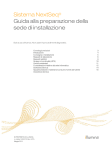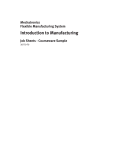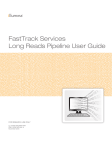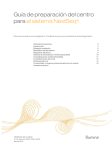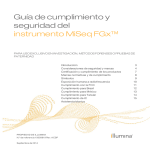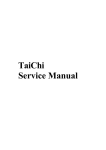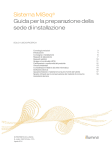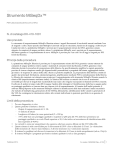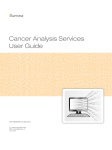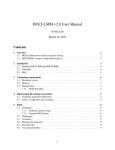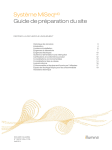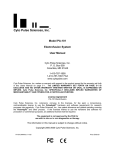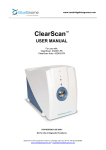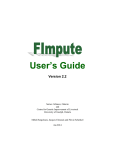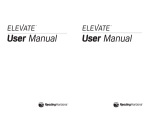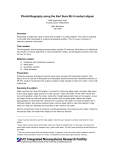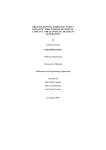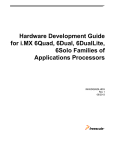Download FastTrack Phasing Analysis Services Guide
Transcript
FastTrack Phasing Analysis
Services Guide
For Research Use Only. Not for use in diagnostic procedures.
ILLUMINA PROPRIETARY
Document # 15047619 v01
September 2015
Customize a short end-to-end workflow guide with the Custom Protocol Selector
support.illumina.com/custom-protocol-selector.html
This document and its contents are proprietary to Illumina, Inc. and its affiliates ("Illumina"), and are intended solely for the
contractual use of its customer in connection with the use of the product(s) described herein and for no other purpose. This
document and its contents shall not be used or distributed for any other purpose and/or otherwise communicated, disclosed,
or reproduced in any way whatsoever without the prior written consent of Illumina. Illumina does not convey any license
under its patent, trademark, copyright, or common-law rights nor similar rights of any third parties by this document.
The instructions in this document must be strictly and explicitly followed by qualified and properly trained personnel in order
to ensure the proper and safe use of the product(s) described herein. All of the contents of this document must be fully read
and understood prior to using such product(s).
FAILURE TO COMPLETELY READ AND EXPLICITLY FOLLOW ALL OF THE INSTRUCTIONS CONTAINED HEREIN
MAY RESULT IN DAMAGE TO THE PRODUCT(S), INJURY TO PERSONS, INCLUDING TO USERS OR OTHERS, AND
DAMAGE TO OTHER PROPERTY.
ILLUMINA DOES NOT ASSUME ANY LIABILITY ARISING OUT OF THE IMPROPER USE OF THE PRODUCT(S)
DESCRIBED HEREIN (INCLUDING PARTS THEREOF OR SOFTWARE).
© 2015 Illumina, Inc. All rights reserved.
Illumina, 24sure, BaseSpace, BeadArray, BlueFish, BlueFuse, BlueGnome, cBot, CSPro, CytoChip, DesignStudio,
Epicentre, ForenSeq, Genetic Energy, GenomeStudio, GoldenGate, HiScan, HiSeq, HiSeq X, Infinium, iScan, iSelect,
MiSeq, MiSeqDx, MiSeq FGx, NeoPrep, NextBio, Nextera, NextSeq, Powered by Illumina, SureMDA, TruGenome,
TruSeq, TruSight, Understand Your Genome, UYG, VeraCode, verifi, VeriSeq, the pumpkin orange color, and the
streaming bases design are trademarks of Illumina, Inc. and/or its affiliate(s) in the U.S. and/or other countries. All other
names, logos, and other trademarks are the property of their respective owners.
Read Before Using this Product
This Product, and its use and disposition, is subject to the following terms and conditions. If Purchaser does not agree to these
terms and conditions then Purchaser is not authorized by Illumina to use this Product and Purchaser must not use this Product.
1
Definitions. "Application Specific IP" means Illumina owned or controlled intellectual property rights that pertain
to this Product (and use thereof) only with regard to specific field(s) or specific application(s). Application Specific
IP excludes all Illumina owned or controlled intellectual property that cover aspects or features of this Product (or
use thereof) that are common to this Product in all possible applications and all possible fields of use (the "Core IP").
Application Specific IP and Core IP are separate, non-overlapping, subsets of all Illumina owned or controlled
intellectual property. By way of non-limiting example, Illumina intellectual property rights for specific diagnostic
methods, for specific forensic methods, or for specific nucleic acid biomarkers, sequences, or combinations of
biomarkers or sequences are examples of Application Specific IP. "Consumable(s)" means Illumina branded
reagents and consumable items that are intended by Illumina for use with, and are to be consumed through the use
of, Hardware. "Documentation" means Illumina's user manual for this Product, including without limitation,
package inserts, and any other documentation that accompany this Product or that are referenced by the Product or in
the packaging for the Product in effect on the date of shipment from Illumina. Documentation includes this
document. "Hardware" means Illumina branded instruments, accessories or peripherals. "Illumina" means Illumina,
Inc. or an Illumina affiliate, as applicable. "Product" means the product that this document accompanies (e.g.,
Hardware, Consumables, or Software). "Purchaser" is the person or entity that rightfully and legally acquires this
Product from Illumina or an Illumina authorized dealer. "Software" means Illumina branded software (e.g.,
Hardware operating software, data analysis software). All Software is licensed and not sold and may be subject to
additional terms found in the Software's end user license agreement. "Specifications" means Illumina's written
specifications for this Product in effect on the date that the Product ships from Illumina.
2
Research Use Only Rights. Subject to these terms and conditions and unless otherwise agreed upon in writing by
an officer of Illumina, Purchaser is granted only a non-exclusive, non-transferable, personal, non-sublicensable right
under Illumina's Core IP, in existence on the date that this Product ships from Illumina, solely to use this Product in
Purchaser's facility for Purchaser's internal research purposes (which includes research services provided to third
parties) and solely in accordance with this Product's Documentation, but specifically excluding any use that (a)
would require rights or a license from Illumina to Application Specific IP, (b) is a re-use of a previously used
Consumable, (c) is the disassembling, reverse-engineering, reverse-compiling, or reverse-assembling of this
Product, (d) is the separation, extraction, or isolation of components of this Product or other unauthorized analysis
of this Product, (e) gains access to or determines the methods of operation of this Product, (f) is the use of non-
Illumina reagent/consumables with Illumina's Hardware (does not apply if the Specifications or Documentation state
otherwise), or (g) is the transfer to a third-party of, or sub-licensing of, Software or any third-party software. All
Software, whether provided separately, installed on, or embedded in a Product, is licensed to Purchaser and not
sold. Except as expressly stated in this Section, no right or license under any of Illumina's intellectual property rights
is or are granted expressly, by implication, or by estoppel.
Purchaser is solely responsible for determining whether Purchaser has all intellectual property rights that
are necessary for Purchaser's intended uses of this Product, including without limitation, any rights from
third parties or rights to Application Specific IP. Illumina makes no guarantee or warranty that purchaser's
specific intended uses will not infringe the intellectual property rights of a third party or Application
Specific IP.
3
Regulatory. This Product has not been approved, cleared, or licensed by the United States Food and Drug
Administration or any other regulatory entity whether foreign or domestic for any specific intended use, whether
research, commercial, diagnostic, or otherwise. This Product is labeled For Research Use Only. Purchaser must
ensure it has any regulatory approvals that are necessary for Purchaser's intended uses of this Product.
4
Unauthorized Uses. Purchaser agrees: (a) to use each Consumable only one time, and (b) to use only Illumina
consumables/reagents with Illumina Hardware. The limitations in (a)-(b) do not apply if the Documentation or
Specifications for this Product state otherwise. Purchaser agrees not to, nor authorize any third party to, engage in
any of the following activities: (i) disassemble, reverse-engineer, reverse-compile, or reverse-assemble the Product,
(ii) separate, extract, or isolate components of this Product or subject this Product or components thereof to any
analysis not expressly authorized in this Product's Documentation, (iii) gain access to or attempt to determine the
methods of operation of this Product, or (iv) transfer to a third-party, or grant a sublicense, to any Software or any
third-party software. Purchaser further agrees that the contents of and methods of operation of this Product are
proprietary to Illumina and this Product contains or embodies trade secrets of Illumina. The conditions and
restrictions found in these terms and conditions are bargained for conditions of sale and therefore control the sale of
and use of this Product by Purchaser.
5
Limited Liability. TO THE EXTENT PERMITTED BY LAW, IN NO EVENT SHALL ILLUMINA OR ITS
SUPPLIERS BE LIABLE TO PURCHASER OR ANY THIRD PARTY FOR COSTS OF PROCUREMENT OF
SUBSTITUTE PRODUCTS OR SERVICES, LOST PROFITS, DATA OR BUSINESS, OR FOR ANY
INDIRECT, SPECIAL, INCIDENTAL, EXEMPLARY, CONSEQUENTIAL, OR PUNITIVE DAMAGES OF ANY
KIND ARISING OUT OF OR IN CONNECTION WITH, WITHOUT LIMITATION, THE SALE OF THIS
PRODUCT, ITS USE, ILLUMINA'S PERFORMANCE HEREUNDER OR ANY OF THESE TERMS AND
CONDITIONS, HOWEVER ARISING OR CAUSED AND ON ANY THEORY OF LIABILITY (WHETHER IN
CONTRACT, TORT (INCLUDING NEGLIGENCE), STRICT LIABILITY OR OTHERWISE).
6
ILLUMINA'S TOTAL AND CUMULATIVE LIABILITY TO PURCHASER OR ANY THIRD PARTY ARISING
OUT OF OR IN CONNECTION WITH THESE TERMS AND CONDITIONS, INCLUDING WITHOUT
LIMITATION, THIS PRODUCT (INCLUDING USE THEREOF) AND ILLUMINA'S PERFORMANCE
HEREUNDER, WHETHER IN CONTRACT, TORT (INCLUDING NEGLIGENCE), STRICT LIABILITY OR
OTHERWISE, SHALL IN NO EVENT EXCEED THE AMOUNT PAID TO ILLUMINA FOR THIS PRODUCT.
7
Limitations on Illumina Provided Warranties. TO THE EXTENT PERMITTED BY LAW AND SUBJECT TO
THE EXPRESS PRODUCT WARRANTY MADE HEREIN ILLUMINA MAKES NO (AND EXPRESSLY
DISCLAIMS ALL) WARRANTIES, EXPRESS, IMPLIED OR STATUTORY, WITH RESPECT TO THIS
PRODUCT, INCLUDING WITHOUT LIMITATION, ANY IMPLIED WARRANTY OF MERCHANTABILITY,
FITNESS FOR A PARTICULAR PURPOSE, NONINFRINGEMENT, OR ARISING FROM COURSE OF
PERFORMANCE, DEALING, USAGE OR TRADE. WITHOUT LIMITING THE GENERALITY OF THE
FOREGOING, ILLUMINA MAKES NO CLAIM, REPRESENTATION, OR WARRANTY OF ANY KIND AS
TO THE UTILITY OF THIS PRODUCT FOR PURCHASER'S INTENDED USES.
8
Product Warranty. All warranties are personal to the Purchaser and may not be transferred or assigned to a thirdparty, including an affiliate of Purchaser. All warranties are facility specific and do not transfer if the Product is
moved to another facility of Purchaser, unless Illumina conducts such move.
a
Warranty for Consumables. Illumina warrants that Consumables, other than custom Consumables, will
conform to their Specifications until the later of (i) 3 months from the date of shipment from Illumina, and
(ii) any expiration date or the end of the shelf-life pre-printed on such Consumable by Illumina, but in no
event later than 12 months from the date of shipment. With respect to custom Consumables (i.e.,
b
c
d
e
f
9
Consumables made to specifications or designs made by Purchaser or provided to Illumina by, or on
behalf of, Purchaser), Illumina only warrants that the custom Consumables will be made and tested in
accordance with Illumina's standard manufacturing and quality control processes. Illumina makes no
warranty that custom Consumables will work as intended by Purchaser or for Purchaser's intended uses.
Warranty for Hardware. Illumina warrants that Hardware, other than Upgraded Components, will
conform to its Specifications for a period of 12 months after its shipment date from Illumina unless the
Hardware includes Illumina provided installation in which case the warranty period begins on the date of
installation or 30 days after the date it was delivered, whichever occurs first ("Base Hardware Warranty").
"Upgraded Components" means Illumina provided components, modifications, or enhancements to
Hardware that was previously acquired by Purchaser. Illumina warrants that Upgraded Components will
conform to their Specifications for a period of 90 days from the date the Upgraded Components are
installed. Upgraded Components do not extend the warranty for the Hardware unless the upgrade was
conducted by Illumina at Illumina's facilities in which case the upgraded Hardware shipped to Purchaser
comes with a Base Hardware Warranty.
Exclusions from Warranty Coverage. The foregoing warranties do not apply to the extent a nonconformance is due to (i) abuse, misuse, neglect, negligence, accident, improper storage, or use contrary to
the Documentation or Specifications, (ii) improper handling, installation, maintenance, or repair (other than
if performed by Illumina's personnel), (iii) unauthorized alterations, (iv) Force Majeure events, or (v) use
with a third party's good not provided by Illumina (unless the Product's Documentation or Specifications
expressly state such third party's good is for use with the Product).
Procedure for Warranty Coverage. In order to be eligible for repair or replacement under this warranty
Purchaser must (i) promptly contact Illumina's support department to report the non-conformance, (ii)
cooperate with Illumina in confirming or diagnosing the non-conformance, and (iii) return this Product,
transportation charges prepaid to Illumina following Illumina's instructions or, if agreed by Illumina and
Purchaser, grant Illumina's authorized repair personnel access to this Product in order to confirm the nonconformance and make repairs.
Sole Remedy under Warranty. Illumina will, at its option, repair or replace non-conforming Product that
it confirms is covered by this warranty. Repaired or replaced Consumables come with a 30-day warranty.
Hardware may be repaired or replaced with functionally equivalent, reconditioned, or new Hardware or
components (if only a component of Hardware is non-conforming). If the Hardware is replaced in its
entirety, the warranty period for the replacement is 90 days from the date of shipment or the remaining
period on the original Hardware warranty, whichever is shorter. If only a component is being repaired or
replaced, the warranty period for such component is 90 days from the date of shipment or the remaining
period on the original Hardware warranty, whichever ends later. The preceding states Purchaser's sole
remedy and Illumina's sole obligations under the warranty provided hereunder.
Third-Party Goods and Warranty. Illumina has no warranty obligations with respect to any goods
originating from a third party and supplied to Purchaser hereunder. Third-party goods are those that are
labeled or branded with a third-party's name. The warranty for third-party goods, if any, is provided by
the original manufacturer. Upon written request Illumina will attempt to pass through any such warranty to
Purchaser.
Indemnification.
a
Infringement Indemnification by Illumina. Subject to these terms and conditions, including without
limitation, the Exclusions to Illumina's Indemnification Obligations (Section 9(b) below), the Conditions to
Indemnification Obligations (Section 9(d) below), Illumina shall (i) defend, indemnify and hold harmless
Purchaser against any third-party claim or action alleging that this Product when used for research use
purposes, in accordance with these terms and conditions, and in accordance with this Product's
Documentation and Specifications infringes the valid and enforceable intellectual property rights of a third
party, and (ii) pay all settlements entered into, and all final judgments and costs (including reasonable
attorneys' fees) awarded against Purchaser in connection with such infringement claim. If this Product or
any part thereof, becomes, or in Illumina's opinion may become, the subject of an infringement claim,
Illumina shall have the right, at its option, to (A) procure for Purchaser the right to continue using this
Product, (B) modify or replace this Product with a substantially equivalent non-infringing substitute, or
(C) require the return of this Product and terminate the rights, license, and any other permissions provided
to Purchaser with respect this Product and refund to Purchaser the depreciated value (as shown in
Purchaser's official records) of the returned Product at the time of such return; provided that, no refund
will be given for used-up or expired Consumables. This Section states the entire liability of Illumina for
b
c
d
e
any infringement of third party intellectual property rights.
Exclusions to Illumina Indemnification Obligations. Illumina has no obligation to defend, indemnify
or hold harmless Purchaser for any Illumina Infringement Claim to the extent such infringement arises
from: (i) the use of this Product in any manner or for any purpose outside the scope of research use
purposes, (ii) the use of this Product in any manner not in accordance with its Specifications, its
Documentation, the rights expressly granted to Purchaser hereunder, or any breach by Purchaser of these
terms and conditions, (iii) the use of this Product in combination with any other products, materials, or
services not supplied by Illumina, (iv) the use of this Product to perform any assay or other process not
supplied by Illumina, or (v) Illumina's compliance with specifications or instructions for this Product
furnished by, or on behalf of, Purchaser (each of (i) – (v), is referred to as an "Excluded Claim").
Indemnification by Purchaser. Purchaser shall defend, indemnify and hold harmless Illumina, its
affiliates, their non-affiliate collaborators and development partners that contributed to the development of
this Product, and their respective officers, directors, representatives and employees against any claims,
liabilities, damages, fines, penalties, causes of action, and losses of any and every kind, including without
limitation, personal injury or death claims, and infringement of a third party's intellectual property rights,
resulting from, relating to, or arising out of (i) Purchaser's breach of any of these terms and conditions, (ii)
Purchaser's use of this Product outside of the scope of research use purposes, (iii) any use of this Product
not in accordance with this Product's Specifications or Documentation, or (iv) any Excluded Claim.
Conditions to Indemnification Obligations. The parties' indemnification obligations are conditioned
upon the party seeking indemnification (i) promptly notifying the other party in writing of such claim or
action, (ii) giving the other party exclusive control and authority over the defense and settlement of such
claim or action, (iii) not admitting infringement of any intellectual property right without prior written
consent of the other party, (iv) not entering into any settlement or compromise of any such claim or action
without the other party's prior written consent, and (v) providing reasonable assistance to the other party in
the defense of the claim or action; provided that, the party reimburses the indemnified party for its
reasonable out-of-pocket expenses incurred in providing such assistance.
Third-Party Goods and Indemnification. Illumina has no indemnification obligations with respect to
any goods originating from a third party and supplied to Purchaser. Third-party goods are those that are
labeled or branded with a third-party's name. Purchaser's indemnification rights, if any, with respect to
third party goods shall be pursuant to the original manufacturer's or licensor's indemnity. Upon written
request Illumina will attempt to pass through such indemnity, if any, to Purchaser.
Document
Date
Description of Change
Document # 15047619
v01
September
2015
Corrected Phased VCF, Unphased VCF, and Phasing Summary
Report file names in the Analysis Deliverables chapter.
Part # 15047619 Rev. B
June 2015
Revised documentation to reflect changes in version 1.1.0 of the
Illumina FastTrack Phasing Analysis Service pipeline.
Part # 15047619 Rev. A
November
2013
FastTrack Phasing Analysis Services Guide
Initial Release.
vi
Revision History
Revision History
Table of Contents
Revision History
Table of Contents
Chapter 1 Getting Started
Phasing Analysis Service
Data Delivery
Chapter 2 Analysis Deliverables
Overview
Result Files
Chapter 3 Analysis Overview
Overview
Identification of Haploid Fragments
Local Phasing
Global Phasing
References
Chapter 4 Phase Scoring
Overview
Intended Use of Phase Scoring
Using Phase Scoring to Extract Globally Phased Blocks
Technical Assistance
FastTrack Phasing Analysis Services Guide
vi
vii
1
2
3
4
5
6
10
11
12
13
14
15
16
17
18
19
20
vii
Chapter 1 Getting Started
Phasing Analysis Service
Data Delivery
FastTrack Phasing Analysis Services Guide
2
3
1
Chapter 1
Getting Started
Getting Started
Phasing Analysis Service
The Phasing Analysis Service leverages TruSeq® Synthetic Long-Read technology to
complement whole-genome sequencing. Phased sequencing captures the unique content of
homologous chromosomes, including mutations that can differ across chromosome copies.
Phase information distinguishes between variants originating from separate chromosomes,
enabling the generation of haplotype fragments for allele-specific analysis.
The FastTrack Phasing Informatics Pipeline uses algorithms designed to provide wholegenome phasing information. TruSeq Synthetic Long-Read uses the variants discovered
from a Whole-Genome Sequencing (WGS) run and the base calls from a TruSeq Synthetic
Long-Read Library Prep as inputs. The FastTrack Phasing Informatics Pipeline then reports
haplotype blocks across the genome and phasing confidence scores in a phased VCF file.
The purpose of this document is to help you understand the Phasing Analysis Service data
package you receive from Illumina. This document provides an overview of the FastTrack
Phasing Informatics Pipeline 1.1.0. deliverables and the Prism v2.2 phasing algorithm.
2
Document # 15047619 v01
Illumina FastTrack Services currently provides data delivery through the following choices.
Illumina Hard Drive Data Delivery
Illumina FTS ships data on 1 or more hard drives. The hard drives are formatted with the
NTFS file system and can optionally be encrypted.
The data on the hard drive are organized in a folder structure with 1 top-level folder per
sample or analysis.
Illumina Cloud Data Delivery
Illumina FTS uploads data to a cloud container. Illumina currently supports uploads to the
Amazon S3 service. Upload data are organized per upload batch by date with an Illumina_
FTS prefix. For example, a sample in a batch uploaded on February 1, 2014 would be found
in the container with the prefix Illumina_FTS/20140201/SAMPLE_BARCODE. Contact your
FastTrack Services project manager to enable cloud delivery.
FastTrack Phasing Analysis Services Guide
3
Data Delivery
Data Delivery
Chapter 2 Analysis Deliverables
Overview
Result Files
FastTrack Phasing Analysis Services Guide
5
6
4
Chapter 2
Analysis Deliverables
Analysis Deliverables
Overview
This section details the files and folder structure for the Phasing Analysis Service results.
The files and folders are named based on the unique sample identifiers. Usually, these
unique identifiers are the barcodes associated with the samples in the lab, but can be a
known sample ID for reference samples.
Result Folder Structure
Under each phasing sample folder, you can find the following file structure that contains
analysis results.
[SampleBarcode]/
Phased_results—Contains all the output files resulting from the phasing library
sequencing run and analysis.
[SampleName]_Phased.vcf.gz—Variant file in VCF 4.1 format with markup to
indicate phased variants and haplotype blocks.
[SampleName]_Unphased.vcf.gz—Variants file in VCF 4.1 format listing the
variants of your sample before phasing.
[SampleName]_PhasingSummaryReport.pdf—PDF report detailing sample
information, sequencing metrics for phasing library, and phasing summary
statistics.
md5sum.txt—Checksum file to confirm file consistency.
[SampleName]_ShortInsertSequencing.tar.gz—Contains the original short read
data for the phasing library.
WGS_results—Folder containing the results of the whole-genome sequencing
pipeline. Refer to the folder structure described in the Whole-Genome Sequencing Services
User Guide, document # 15040892.
5
Document # 15047619 v01
Phased VCF File
The [SampleName]_Phased.vcf.gz file contains the principal results of the FastTrack
Phasing Informatics Pipeline. This file includes most of the information in the input VCF
file, which is generated from the FastTrack Services Whole-Genome Sequencing Informatics
Pipeline. For more information, see the Whole-Genome Sequencing Services User Guide,
document # 15040892.
The phased VCF file differs from the input VCF in the following ways:
} Contains additional markup about the phase of variants, our confidence in the phase
assignments, and on sets of phased heterozygous variants. Heterozygous variants that
could not be phased are unchanged in the final VCF file.
} Does not include the variants excluded from analysis, which are based on the
following criteria:
} Indels > 50 bp in length
} Nonpassing variants
} Haploid
} Nonvariant
} Variants with nonstandard VCF formatting
The following table describes fields in the phased VCF file.
Metric
Description
Genotype
(GT)
Phased variants (heterozygous and homozygous) contain a modified GT field,
using a pipe symbol (|) instead of forward slash in accordance with VCF 4.1
specifications. Variants whose genotype contains a slash (/) in the phased VCF
are unphased.
Emission
Likelihood
(EL)*
An indication of the degree of confidence that the phasing of 1 locus is correct
relative to its neighbors. Although evaluation of quantitative correctness is still
ongoing, the value can be interpreted as a likelihood. Values range from 0.5 (a
random guess) to 1 (complete confidence).
Transition
Likelihood
(TL)*
The confidence in the phasing of variants between the current (heterozygous)
variant locus and the previous heterozygous locus. Although evaluation of
quantitative correctness is still ongoing, the value can be interpreted as a
likelihood. Values range from 0.5 (random guess) to 1 (complete confidence).
Phase Set
(PS)
Used in the FastTrack Phasing Informatics Pipeline to define the heterozygous
variants that belong to a globally phased block set with TL > 0.95. The integer
value represents the coordinate of the first locus in a given phase set. PS values
are unique within a chromosome locus. Therefore, variants with the same PS
value on different chromosomes are not phased relative to each other.
Local Phase
Set (LPS)
Interpretation is analogous to that of PS, except that the phasing indicated by
LPS annotation is based solely on the blocks determined by local phasing. In
general, confidence in the relative phasing of variants that share the LPS is
higher than the confidence for variants that share a PS value but not an LPS
value.
Inconsistency
Flag (ICF)
An indication of positions where the alleles detected in the long fragment
library do not match the expected alleles from the input WGS VCF file.
*For more information, see the Phase Scoring Overview on page 17.
FastTrack Phasing Analysis Services Guide
6
Result Files
Result Files
Analysis Deliverables
Unphased VCF File
The [SampleName]_Unphased.vcf.gz file contains a subset of variants from the input VCF
that pass the filtering criteria. No additional phasing information is provided in this file.
For more information, see the Whole-Genome Sequencing Services User Guide, part # 15040892.
Phasing Summary Report
The [SampleName]_PhasingSummaryReport.pdf file contains an overview of the metrics of
the long fragments library and statistics from the phasing analysis.
Input VCF Snapshot
This section describes details related to the input whole-genome sequencing VCF file.
Metric
Description
Reference Genome
Version of human reference genome used in the analysis.
Number of Variants
Total number of indels and single nucleotide variants (SNVs) used in
the phasing analysis.
Number of
heterozygous
variants
Total number of heterozygous indels and SNVs used in the phasing
analysis.
Number of
heterozygous SNPs
Total number of heterozygous SNVs used in the phasing analysis.
Sequencing Metrics
This section describes details related to the sequencing of reads from a TruSeq Synthetic
Long-Read Library Prep.
7
Metric
Description
Total reads (Pass
Filter)
Total number of short read pairs that pass filter.
Percent Reads
Mapped
Percentage of short reads across all barcodes that align to the hg19
reference.
Cloud N50 Length
N50 value of long fragments/clouds identified across all barcodes by
aligning to the hg19 reference genome. The N50 is the length for
which the collection of all blocks or contigs of that length, or longer,
contains half of the total bases included in blocks/contigs.
Document # 15047619 v01
Result Files
Phasing Statistics
This section describes details related to the phasing of variants.
Metric
Description
Local N50
N50 value of locally phased blocks generated without imputation
from the second step of the analysis, and derived by parsing the
Local Phase Set (LPS) value. The value is reported separately for
haplotype blocks considering SNVs alone and both SNVs and indels.
Global N50
N50 value of globally phased blocks generated using imputation
from the third step of the analysis, and derived by parsing the Phase
Set (PS) value. The value is reported separately for haplotype blocks
considering SNVs alone and both SNVs and indels.
Percent Phased
The overall percentage of heterozygous variants included in globally
phased blocks, and derived by parsing the PS value. The value is
reported separately for haplotype blocks considering SNVs alone
and both SNVs and indels.
Gene Phasing Statistics
For all autosomal genes in RefSeq, we report the fraction of phased variants with EL value
≥ 0.95 that intersect the coordinates of the RefSeq genes.
Metric
Description
100% Variants
phased
Number of autosomal genes on chromosomes 1–22 that have 100%
of their variants with EL value ≥ 0.95 phased.
>70% Variants
phased
Number of autosomal genes on chromosomes 1–22 that have at
least 70% of their variants with EL value ≥ 0.95 phased.
The report file also provides 2 plots illustrating gene phasing metrics:
} Phasing Completeness by Gene—Provides the distribution of the fraction of variants
phased per gene, over all autosomal RefSeq genes. This metric considers all variants
phased across the gene, regardless of the number of haplotype blocks that span the
gene.
} End-to-End Phasing Confidence—Provides the distribution of the minimum Transition
Likelihood (TL) value within each autosomal gene in RefSeq. Phased blocks break
when the TL falls below a selected accuracy threshold. Therefore, the minimum TL
value per gene indicates our confidence that the gene is phased in 1 block, end-to-end,
at a given accuracy threshold. Usually, most genes are phased in 1 block, indicated by
the peak observed at a TL value of 1.
Short Read Output Folder
The [SampleName]_ShortInsertSequencing.tar.gz folder contains the short read output from
the long fragments library sequencing run. The output files are in FASTQ format and are
demultiplexed using the sample barcode, allowing a 1-base mismatch in the barcode
sequence. The presence of end markers of the 5’–3’ sequence TACGCTTGCAT in short read
sequences indicate one end of a long fragment. Any sequence 5’ of the end marker, or 3’ of
its reverse complement, is expected to be adapter rather than sample DNA, except where
the sequence TACGCTTGCAT is a native part of your sample DNA.
FastTrack Phasing Analysis Services Guide
8
Analysis Deliverables
Data Integrity
The md5sum.txt file is provided to check the integrity of the sample files and folders.
Immediately after sample quality check, the md5sums, or compact digital fingerprint, for
every file in the directory tree are generated. If media failures compromise data integrity,
you can use the md5sum tool to find the inconsistencies. Use the tool to compare the hash
from the provided md5sum file to the hash generated from the downloaded file.
On a Unix system, you can use the following commands to perform an md5sum check,
assuming the utility is installed:
% cd [Sample_Barcode]
% md5sum –c md5sum.txt
The check verifies every file in ~30–45 minutes. Any errors are listed in the output.
In Windows, there are various command line and GUI tools available to perform an
md5sum check. The Cygwin tools provide a utility identical to Linux.
9
Document # 15047619 v01
Chapter 3 Analysis Overview
Overview
Identification of Haploid Fragments
Local Phasing
Global Phasing
References
FastTrack Phasing Analysis Services Guide
11
12
13
14
15
10
Chapter 3
Analysis Overview
Analysis Overview
Overview
The FastTrack Phasing Informatics Pipeline works in 3 steps.
1
Identification of Haploid Fragments— The FastTrack Phasing Informatics Pipeline
separates the sequence reads into the component 384 wells based on the barcode
sequence and aligns the reads to the human reference sequence. The algorithm then
detects haploid fragments of DNA, or clouds, in each well, and records the overlapping
heterozygous variants called in the input WGS VCF file. Clouds that indicate an
overlap of fragments from both maternal and paternal chromosomes are removed.
2
Local Phasing—The resulting fragments (up to ~10 kb long) are pooled together.
Fragments that share heterozygous SNPs are chained together to reconstruct longer
haplotypes. On average, these locally phased blocks are 5–10× longer than the
individual clouds and provide highly accurate haplotype blocks derived entirely from
the data.
3
Global Phasing—Using the 1000 Genomes phased reference panels for statistical
imputation, the locally phased blocks are phased relative to each other to reconstruct
longer haplotypes. Final block sizes are increased another 5–10× relative to locally
phased blocks. Phased blocks and confidence scores are output in the phased VCF file.
Figure 1 FastTrack Phasing Informatics Algorithm Workflow
11
Document # 15047619 v01
The first stage of the phasing algorithm involves the identification of contiguous segments
of haploid fragments, or clouds, in each well.
The reads from each well are aligned to the human reference genome using the BWA
aligner1 and clustered into groups separated from each other by at least 2 Kbp. Reads that
cluster according to this criterion are likely to have originated from the same fragment. The
heterozygous variants from the WGS VCF that intersect the long fragments are retained as
input to the subsequent steps of the phasing pipeline. Fragments with the following criteria
are removed from consideration:
} Insufficient sequencing read coverage
} Many variant-covering base calls with low Q-scores
} Evidence of 2 different alleles in the same fragment
} Inferred length in the top 3 percentiles
The result of this stage is a set of clouds from every well. Each cloud corresponds to an
interval on the reference genome and the base calls of reads that overlap heterozygous
variant calls from the input VCF. A cloud provides a tentative phasing of the set of
variants that map to the original long fragment.
Reference Genome Definition
The phasing pipeline currently uses hg19 from UCSC as a reference genome
(genome.ucsc.edu). The chromosome naming scheme follows the UCSC conventions of
chr1-22, chrX, chrY, chrM. The pseudoautosomal region (PAR) of the Y chromosome is
masked out with N’s. Therefore, any mappings occurring in the PAR region map to the X
chromosome. Currently, only the assembled chromosomes and mitochondria are used in
the reference; none of the nonmapped contigs are included, nor are alternate haplotypes.
Table 1 hg19 PAR Regions
Name
Chr
Start
PAR #1
X
60,001
PAR #2
X
154,931,044
PAR #1
Y
10,001
PAR #2
Y
59,034,050
FastTrack Phasing Analysis Services Guide
Stop
2,699,520
155,260,560
2,649,520
59,363,566
12
Identification of Haploid Fragments
Identification of Haploid Fragments
Analysis Overview
Local Phasing
In the next stage of the pipeline, the clouds are combined across wells. Clouds with
overlapping heterozygous SNP sites are joined, resulting in blocks that are normally
around 5–10× larger in size than the input clouds. Each of these blocks is analyzed to infer
the phasing of the variants it covers.
The local phasing algorithm finds the haplotypes and cloud-to-haplotype assignments that
best fit the data (the maximum likelihood answer), using an algorithm based on Hidden
Markov Models (HMM). The algorithm works iteratively, by finding and scoring the best
partial solution for positions 1 through k for each possible choice of phasing and cloud-tohaplotype assignments at position k. The partial solution is based on the best partial
solutions at positions 1 through k-1.
Phasing and cloud assignments at position k are scored by considering the quality scores
of the alleles in the clouds at k and also requiring that cloud assignments are ‘consistent’.
For a cloud assignment to be consistent, we require that fragments that span positions k
and k-1 are assigned to the same haplotype. Ignoring the cloud assignments for simplicity,
we find the best possible phasing of positions 1 through k such that position k is phased
0|1 or 1|0 (chromosome A | chromosome B).
The best phasing of 1..k with phasing 0|1 at position k is obtained by comparing
extensions of the following:
} The best solution for 1..k-1 with 0|1 phasing at k-1
} The best solution for 1..k-1 with 1|0 phasing at k-1
When analysis has finished with the final position N, the local phasing algorithm
compares the best solution with 0|1 phasing at N against the best solution with 1|0
phasing at N. The algorithm then determines the optimal phasing. The optimal phasing of
the final position also aids in determining the optimal phasing of all positions.
13
Document # 15047619 v01
Using a statistical algorithm, the local blocks that have been computed are phased relative
to each other to form long haplotype contigs.
The global phasing algorithm is based on a hidden Markov model (HMM), which extends
statistical phasing algorithms such as IMPUTE22 and SHAPE-IT3. The locally phased
blocks are viewed as an imperfect mosaic from a reference panel of prephased haplotypes
from the 1000 Genomes project4. The algorithm assigns the most likely phase to each
locally phased block. This assignment is based on the best matches of the local blocks to
the individuals in the reference panel and patterns of linkage disequilibrium inferred
statistically from the panel.
In addition to finding the optimal phase, the confidence scores (Emission Likelihood (EL)
and Transition Likelihood (TL)) are derived. These scores represent the likelihood of a
switch or single-site error between the current SNP and the previously phased SNP. Each
heterozygous variant that is given a TL score < 0.95 causes the previous phase set, if any,
to end and typically starts a new phase set. An exception to this rule occurs when breaking
a block at a variant with TL < 0.95 results in a singleton block (the next heterozygous locus
also has TL < 0.95 or the current heterozygous locus is the last of the chromosomes). In this
case, the preceding phase set is ended, but no phase set is output for the singleton variant.
The scores can also be used to break the inferred haplotypes into blocks at a given level of
accuracy. For applications requiring highly accurate haplotype blocks, haplotype contigs
can be broken at a higher threshold, resulting in shorter but more accurate blocks.
Alternatively, a more-aggressive reconstruction can be obtained by breaking blocks at a
lower threshold.
FastTrack Phasing Analysis Services Guide
14
Global Phasing
Global Phasing
Analysis Overview
References
15
1
Li H. and Durbin R. Fast and accurate long-read alignment with Burrows-Wheeler
transform. Bioinformatics 26, 589–595 (2010).
2
Howie, B.N., Donnelly, P. & Marchini, J. A Flexible and Accurate Genotype Imputation
Method for the Next Generation of Genome-Wide Association Studies. PLoS Genet 5,
e1000529 (2009).
3
Delaneau, O., Zagury, J. & Marchini, J. Improved whole-chromosome phasing for
disease and population genetic studies. Nat Meth 10, 5–6 (2012).
4
McVean, G.A. et al. An integrated map of genetic variation from 1,092 human
genomes. Nature 491, 56–65 (2012).
Document # 15047619 v01
Chapter 4 Phase Scoring
Overview
Intended Use of Phase Scoring
Using Phase Scoring to Extract Globally Phased Blocks
FastTrack Phasing Analysis Services Guide
17
18
19
16
Chapter 4
Phase Scoring
Phase Scoring
Overview
The Emission Likelihood (EL) and Transition Likelihood (TL) values in the phased VCF file
provide the degree of confidence in phasing for each phased heterozygous variant. The
scores indicate 2 different modes of possible error in phasing.
} Single-site error—The EL score addresses the possibility of a single-site error at a locus,
which means that the inferred phasing of one locus is wrong relative to its neighbors.
} Switch error—The TL score addresses the possibility of a switch error, which means
that the relative phase of variants before a given locus is wrong compared to the phase
of variants at and after the locus.
The following examples illustrate the accurate haplotype and the 2 types of errors.
Table 2 Accurate Haploytype and Error Type Examples
Description
Example
Accurate Haplotype—
00000000000000000000000000
Haplotypes arbitrarily
11111111111111111111111111
labeled 0 and 1
Single-site Error—
00000010000000000000100000
Indicated by *
11111101111111111111011111
Switch Error—Indicated
by |
17
haplotype 1
haplotype 2
haplotype 1
haplotype 2
* *
00000000000000111111111111 haplotype 1
11111111111111000000000000 haplotype 2
|
Document # 15047619 v01
The Emission Likelihood and Transition Likelihood scores allow the algorithm to assign
scores to individual loci, rather than all pairs of loci.
For example, a given locus can be weakly phased but confidence in the phasing between
variants separated by that locus can remain high. This situation can arise if a locus has
low coverage and/or poor quality base calls, but the clouds spanning the variant connect
other variants with better coverage. In this case, you can have a low single-site confidence
(a low EL score) and a high confidence in phasing spanning these loci (a high TL score)
These scores can help answer the following questions.
Table 3 Phase Scoring Questions and Answers
Question
Answer
How confident can we be in the
Calculate the combined probability (PQ1) of a switch
reported relative phasing of 2
error between the 2 (TL value of the second site) and a
adjacent sites? If 2 sites are on the
single-site error at either locus (EL values of both sites).
same chromosome and there are no Thus, for loci i and i+1, the relative phasing confidence
intervening loci for which phasing is can be estimated as follows:
reported, these 2 sites are 'adjacent'. P = TL * EL * EL
Q1
i+1
i
i+1
How confident can we be in the
reported relative phasing of 2 distal
sites?
FastTrack Phasing Analysis Services Guide
Calculate the combined probability (PQ2) of switch
errors anywhere between the 2 loci (TL value at the 2
loci and between) and no single-site error at either locus
(EL value at the 2 sites). Thus, for loci i and i+n, the
relative phasing confidence can be estimated as follows:
PQ2 = TLi * TLi+1 * TLi+2 *…* TLi+n * ELi * ELi+n
18
Intended Use of Phase Scoring
Intended Use of Phase Scoring
Phase Scoring
Using Phase Scoring to Extract Globally Phased Blocks
In the provided phased VCF files, the default Transition Likelihood (TL) cutoff of TL ≥ 0.95
is used to determine Phase Set (PS) annotations. The PS annotations are used as a starting
point to define haplotype blocks, which are all variants on a given chromosome with the
same PS value.
A locus with a low EL score usually receives a PS annotation even though it is not
confidently phased relative to the other members of the phase set. Before phasing 2
variants relative to each other, make sure that the 2 loci both have PS annotations with the
same value and make sure that both loci have EL scores ≥ 0.95.
Some applications require greater confidence or more aggressive (less confident) phasing.
To extract phased blocks using alternative probability cutoffs, you can use the TL and EL
scores together to parse Globally Phased Blocks from the VCF file.
If a set of loci on the same chromosome meet the following criteria, then they are phased
relative to each another.
} All SNPs have TL scores ≥ an alternative cutoff, except for the first locus in the set. This
alternative cutoff is relatively high for greater confidence and relatively low for more
aggressive phasing.
} For all loci in the set, EL scores are ≥ an alternative cutoff (relatively high for greater
confidence and more aggressive phasing).
19
Document # 15047619 v01
Technical Assistance
For technical assistance, contact Illumina Technical Support.
Table 4 Illumina General Contact Information
Website
Email
www.illumina.com
[email protected]
Table 5 Illumina Customer Support Telephone Numbers
Region
Contact Number
Region
North America
1.800.809.4566
Italy
Australia
1.800.775.688
Netherlands
Austria
0800.296575
New Zealand
Belgium
0800.81102
Norway
Denmark
80882346
Spain
Finland
0800.918363
Sweden
France
0800.911850
Switzerland
Germany
0800.180.8994
United Kingdom
Ireland
1.800.812949
Other countries
Contact Number
800.874909
0800.0223859
0800.451.650
800.16836
900.812168
020790181
0800.563118
0800.917.0041
+44.1799.534000
Safety data sheets (SDSs)—Available on the Illumina website at
support.illumina.com/sds.html.
Product documentation—Available for download in PDF from the Illumina website. Go
to support.illumina.com, select a product, then select Documentation & Literature.
FastTrack Phasing Analysis Services Guide
Illumina
5200 Illumina Way
San Diego, California 92122 U.S.A.
+1.800.809.ILMN (4566)
+1.858.202.4566 (outside North America)
[email protected]
www.illumina.com




























